Photos: Crackdown on migrants in Mexico
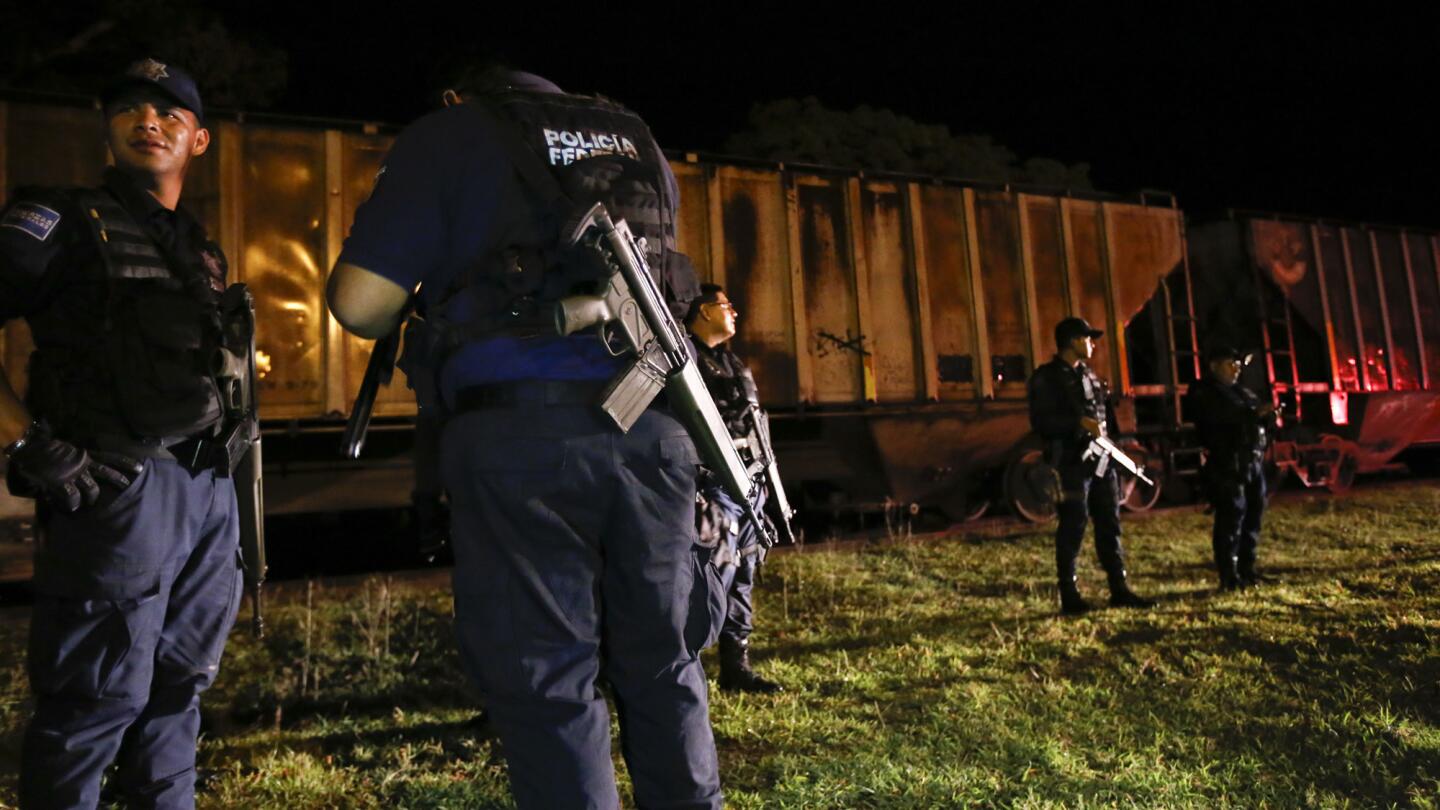
Mexican federal police and immigration officers in San Ramon look for Central American migrants trying to head north. (Michael Robinson Chavez / Los Angeles Times )
Frequent and efficient immigration raids on the freight trains known as “the Beast” are a new phenomenon in Mexico, where for a generation authorities took a laissez-faire approach to the tens of thousands of Central Americans who traverse the nation in hopes of reaching the U.S.
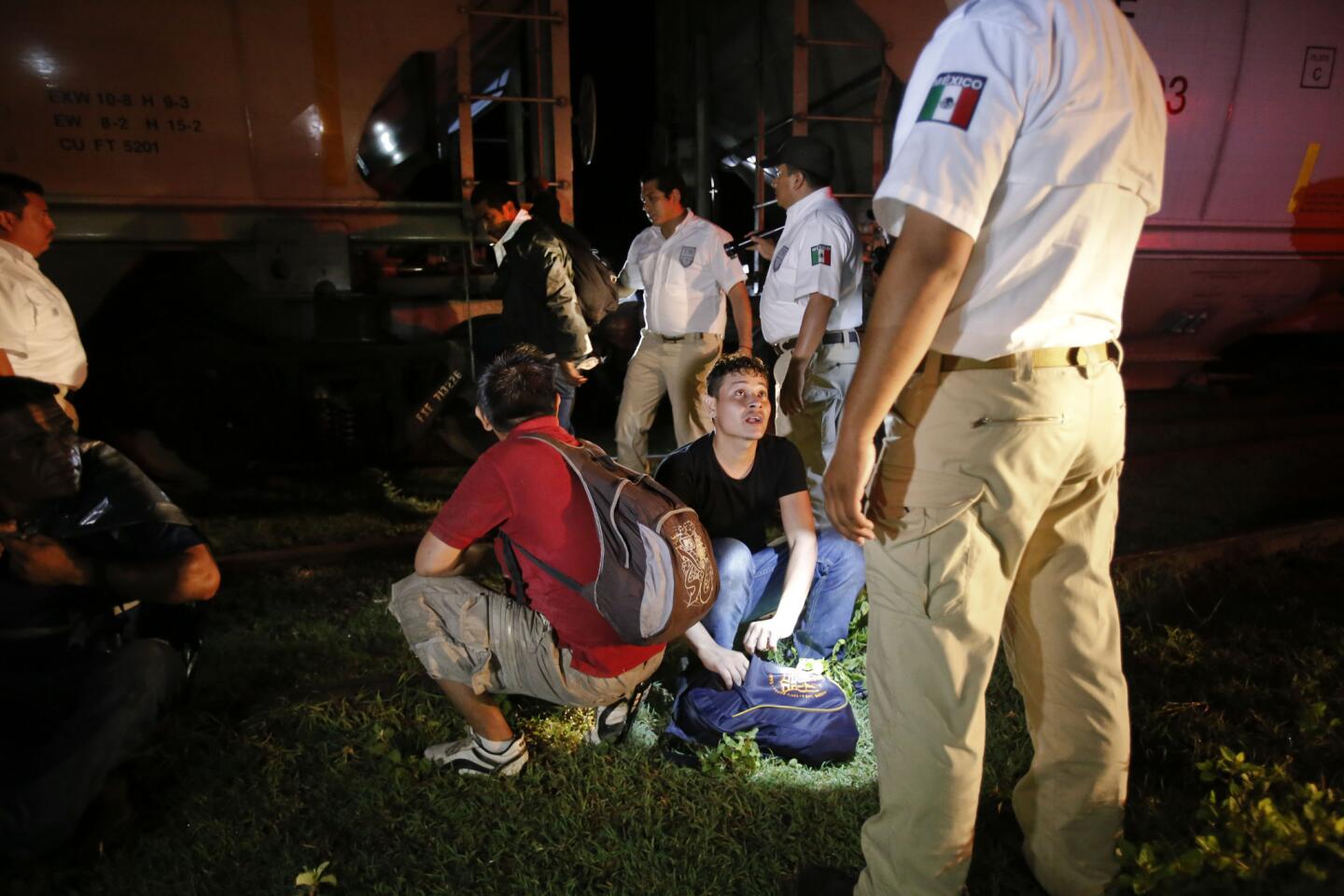
Mexican Federal Police and immigration officers apprehend Central American migrants who were attempting to move northward on La Bestia, a freight train that runs north from the Guatemalan border. (Michael Robinson Chavez / Los Angeles Times)
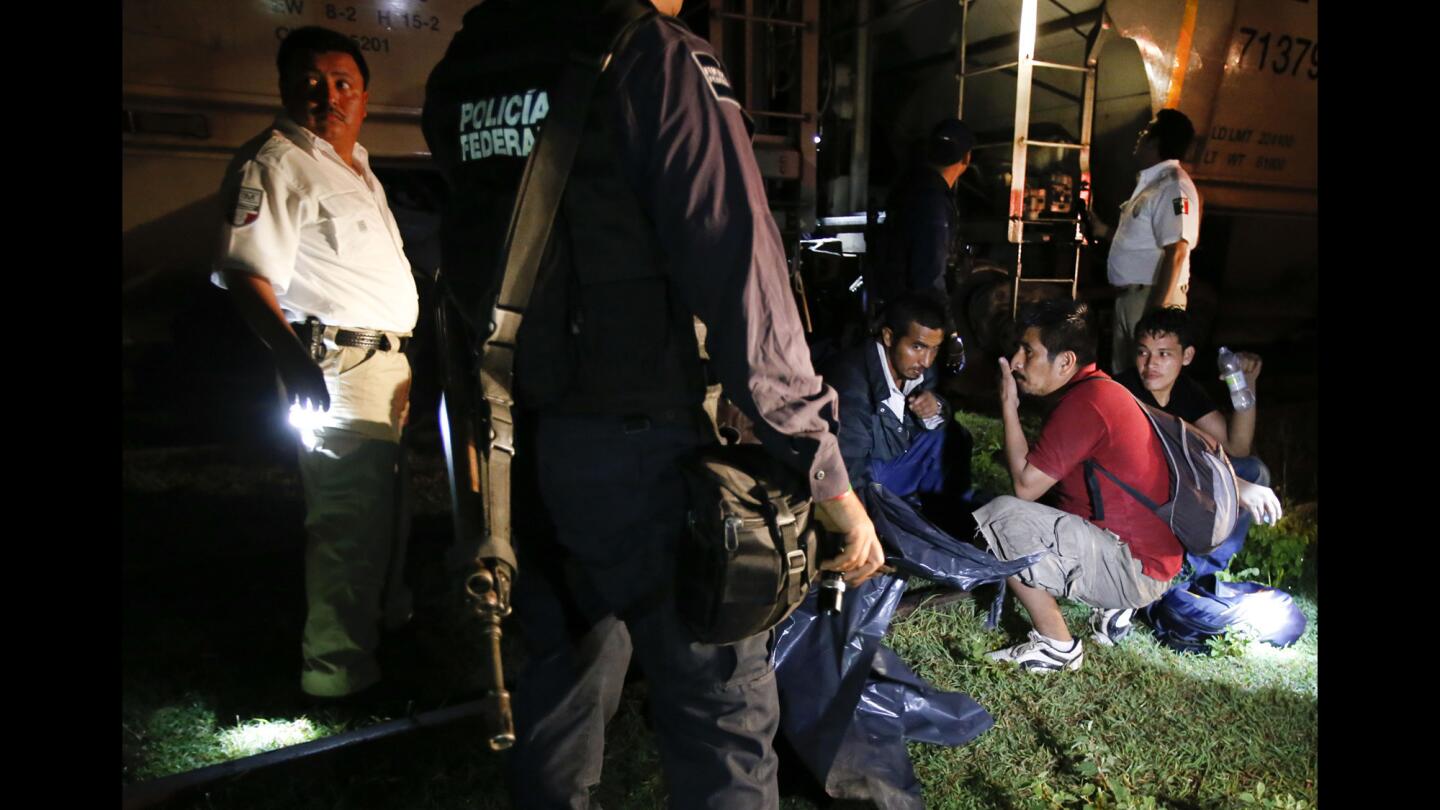
The infamous trains were once overflowing with migrants making their way north, but a crackdown by Mexican officials has sharply reduced the numbers. More than 70,000 migrants have been deported this year. (Michael Robinson Chavez / Los Angeles Times)
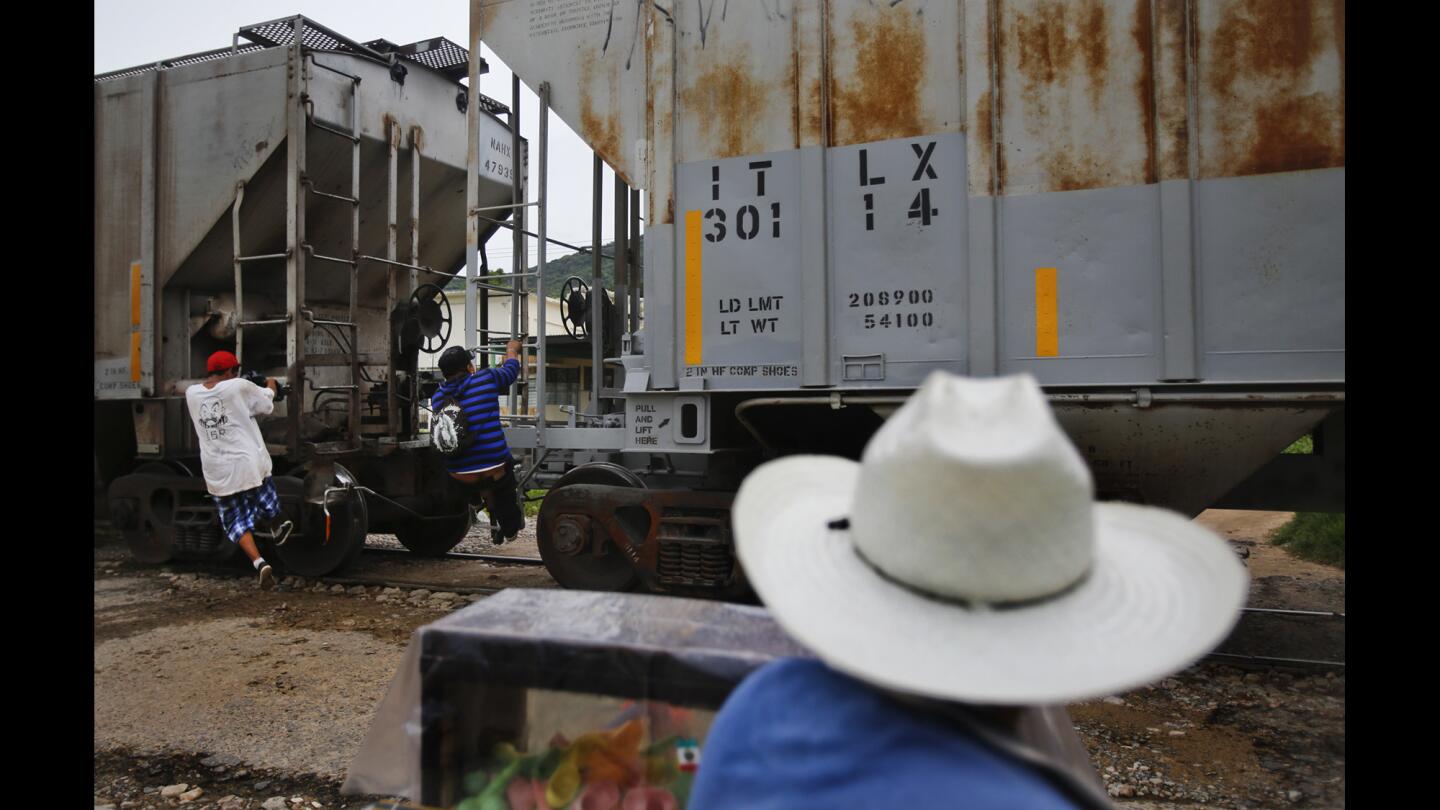
Two migrants from Guatemala jump aboard the Beast as it rolls through the rail yard in Arriaga, in southern Mexico. (Michael Robinson Chavez / Los Angeles Times)
Advertisement
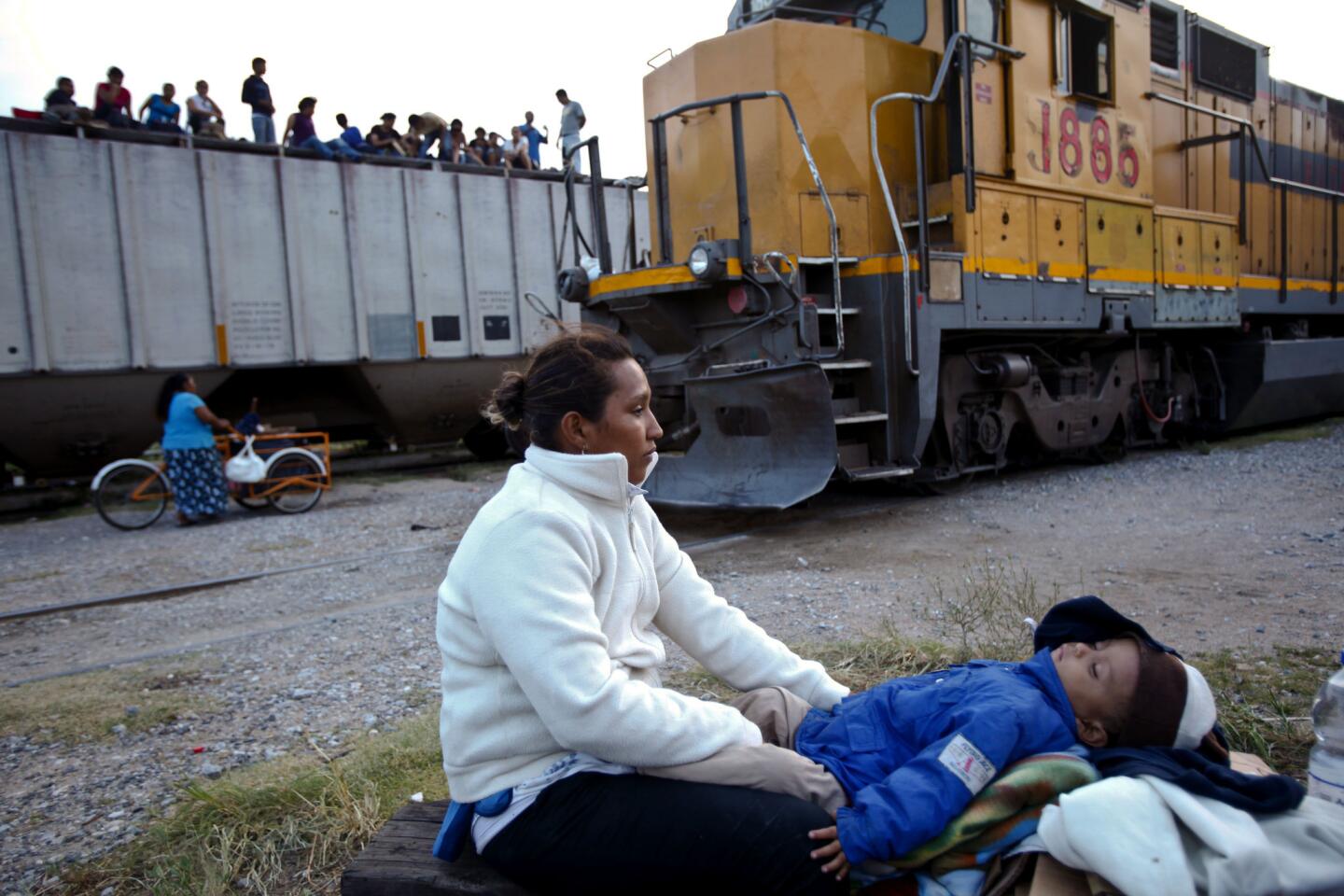
Kimberly Castellanos sits at the train yard of Arriaga with her 2-year-old son Steven. The family, from Guatemala, was making their way north aboard “La Bestia,” a notoriously dangerous freight train that runs north through Mexico. (Michael Robinson Chavez / Los Angeles Times)
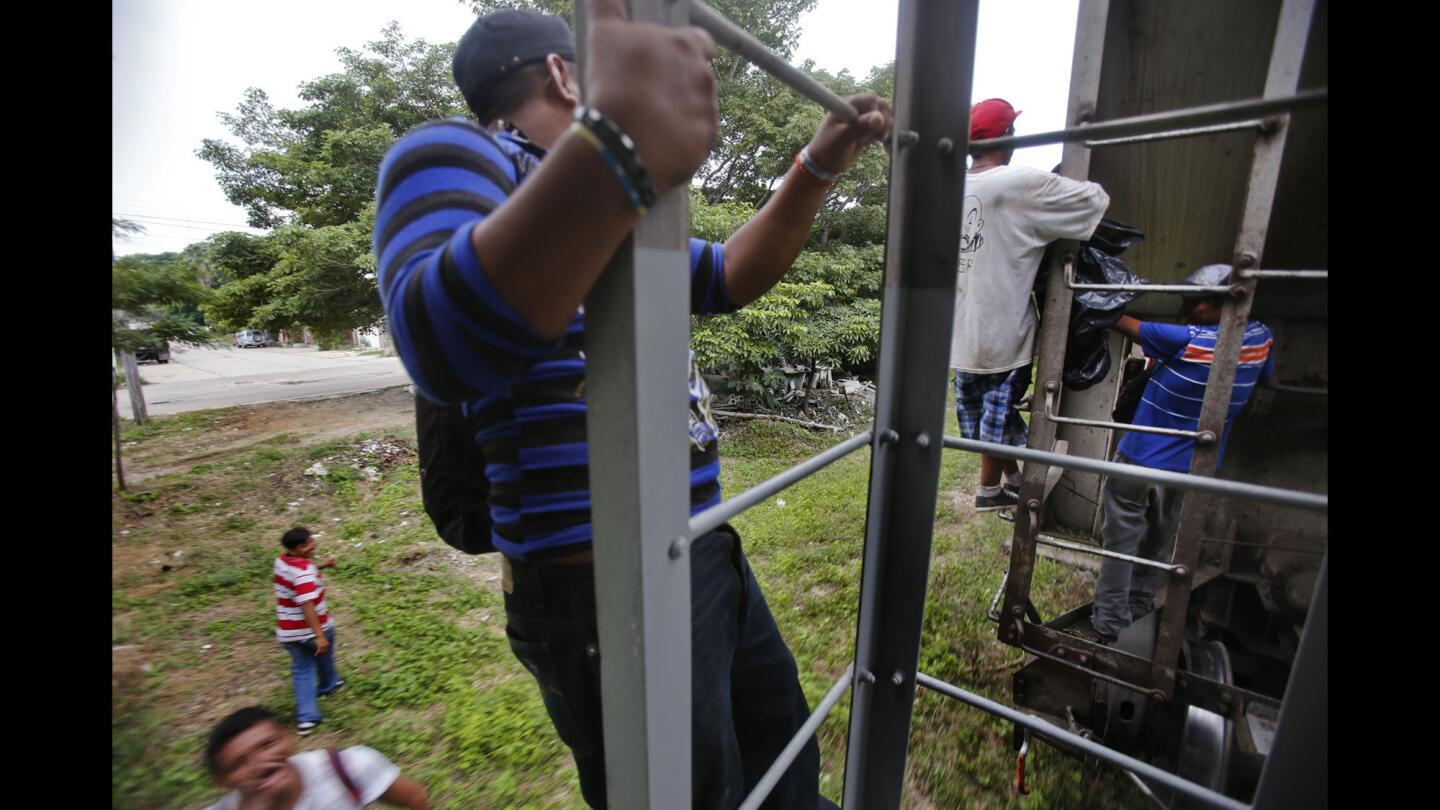
Men cling to a train as it leaves Arriaga. Many migrants now walk hundreds of miles rather than risk being caught during the immigration raids targeting the trains. (Michael Robinson Chavez / Los Angeles Times)
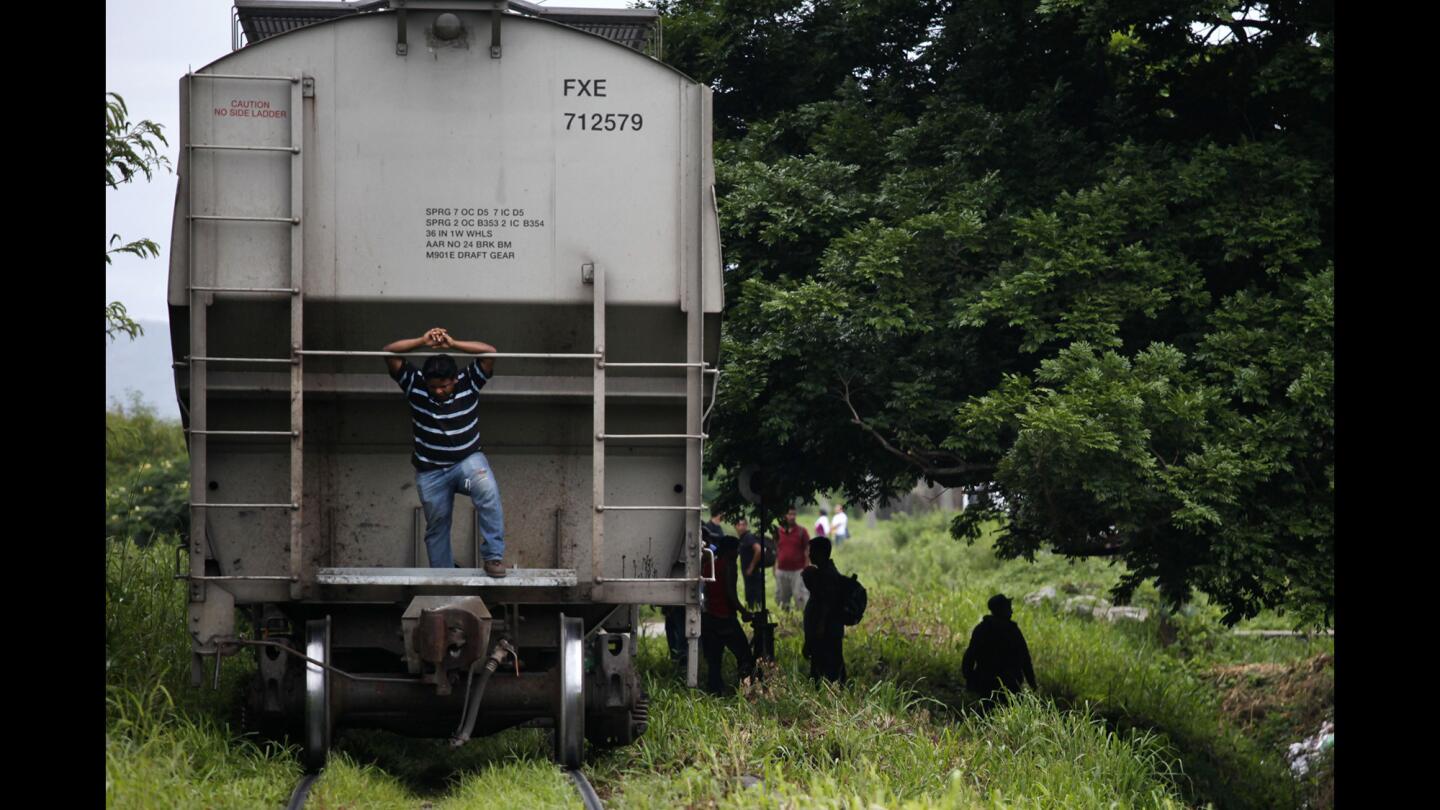
Migrants, right, wait outside Arriaga to board the Beast as a train employee stands on the back of the last car, acting as a lookout for the engineers. (Michael Robinson Chavez / Los Angeles Times)
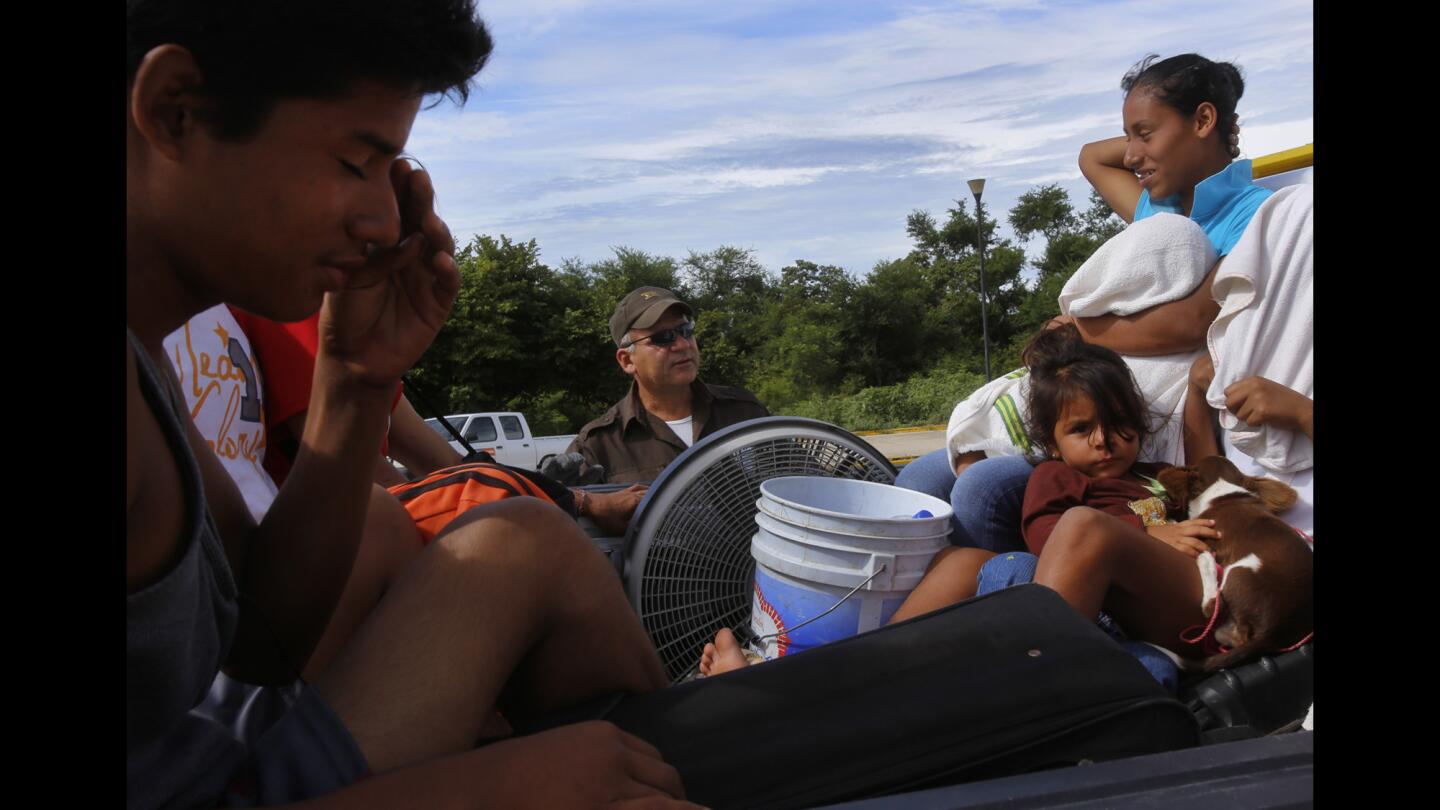
An immigration official in El Paraiso, Mexico, questions a family riding in the back of a pickup truck near the border between Chiapas and Oaxaca states. (Michael Robinson Chavez / Los Angeles Times)
Advertisement
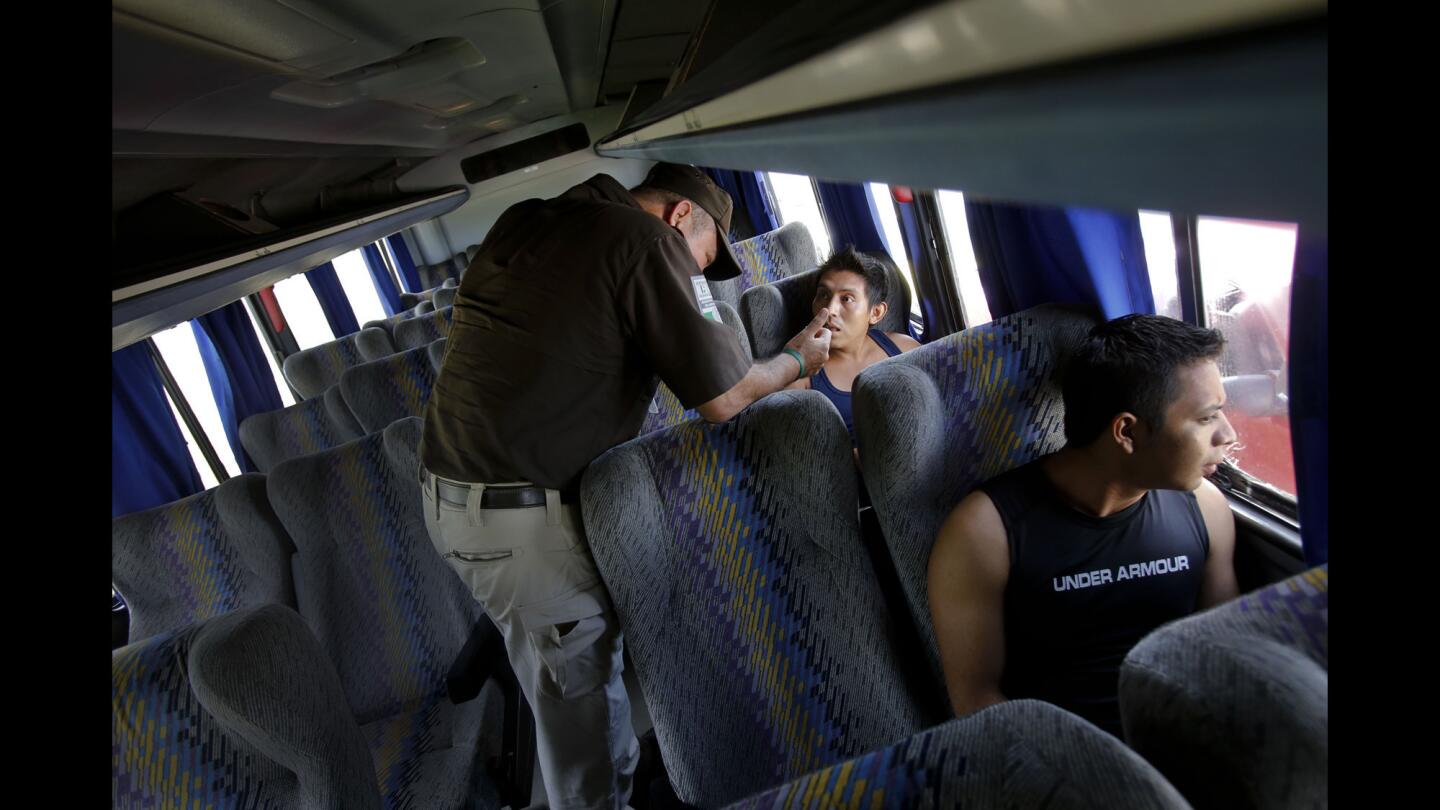
A young man on a bus traveling from Arriaga to Juchitan, Mexico, is questioned by an immigration officer. (Michael Robinson Chavez / Los Angeles Times)
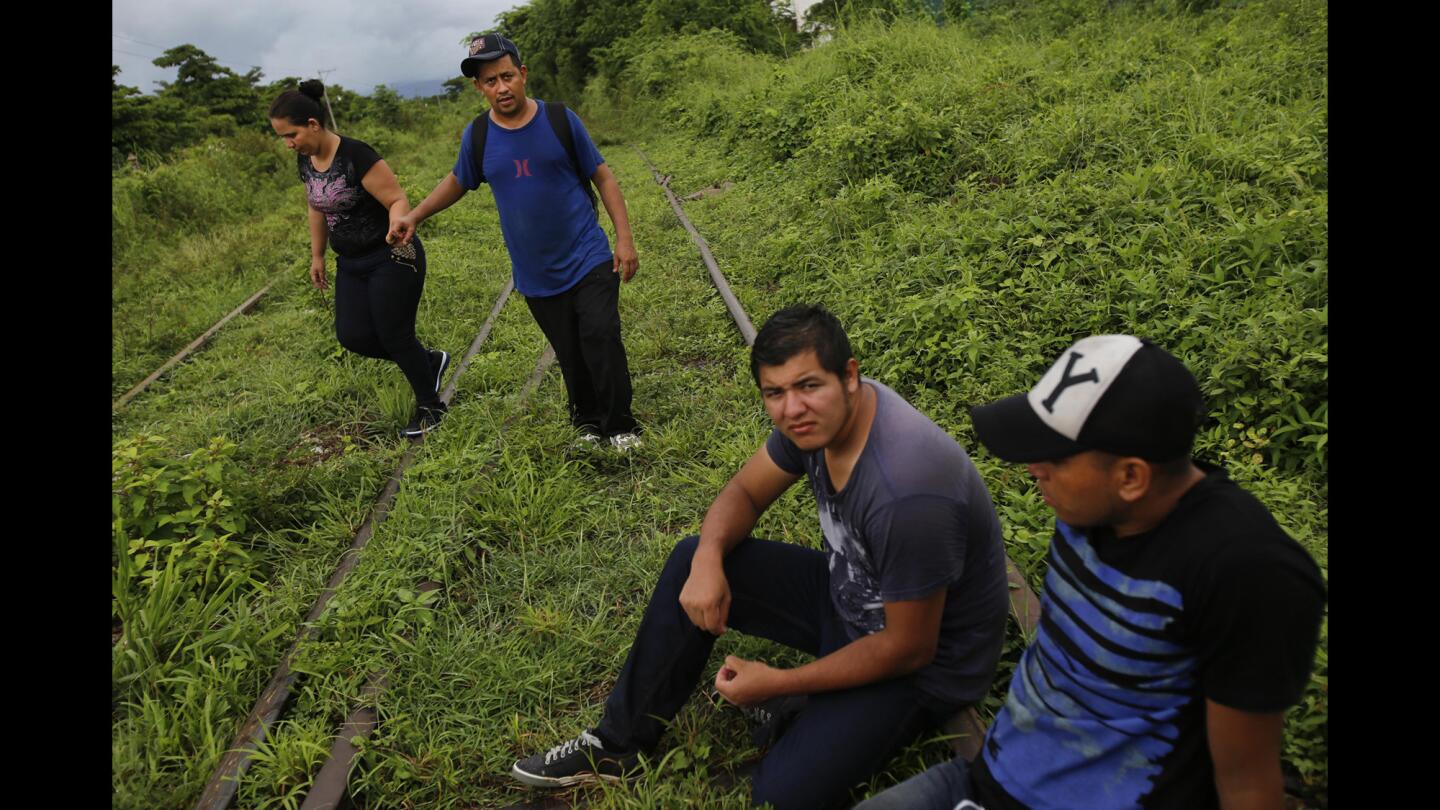
Migrants from Guatemala and Honduras wait near the railroad tracks in Chiapas state, in southern Mexico, for a train they hope will carry them closer to the U.S. (Michael Robinson Chavez / Los Angeles Times)
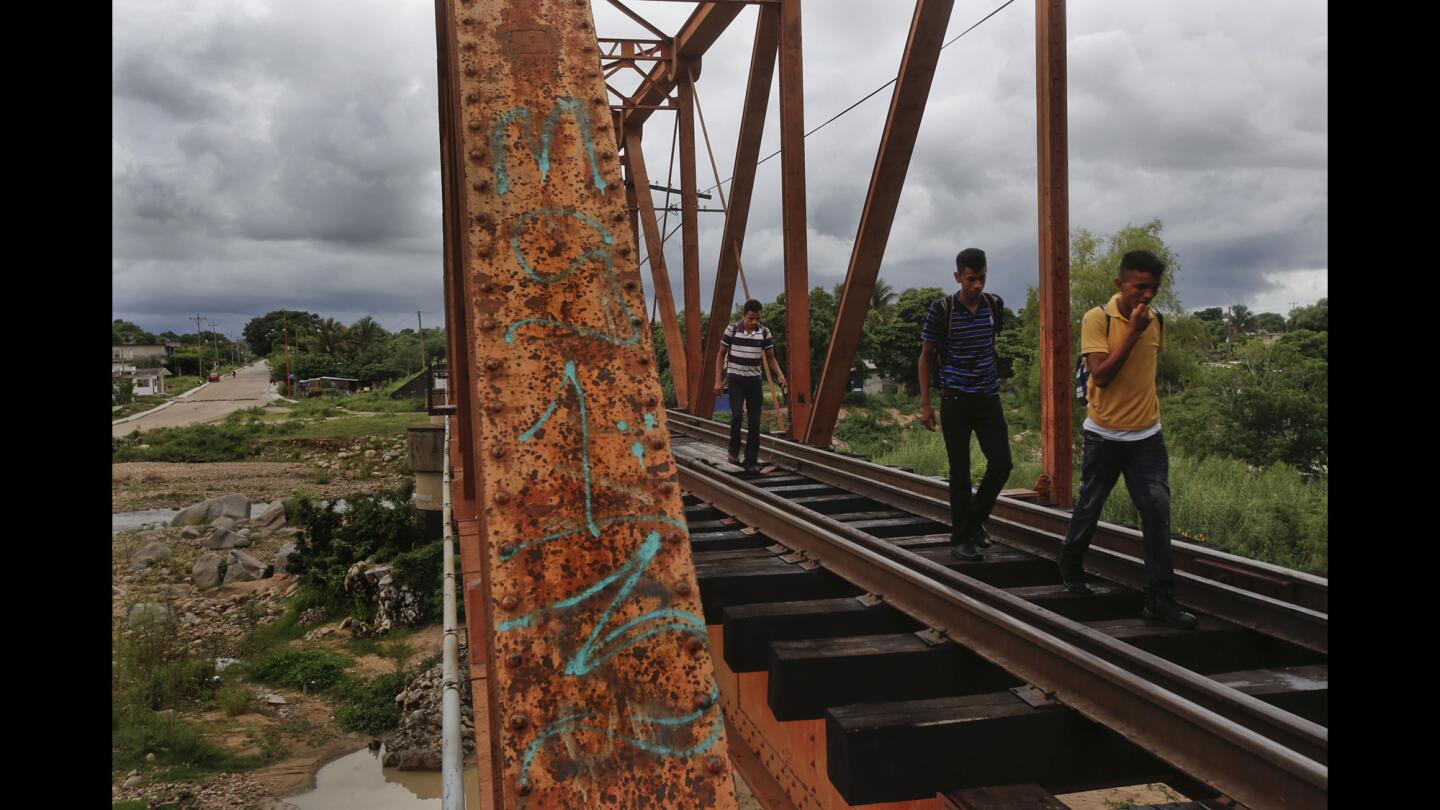
Young men from Guatemala cross a railroad bridge into Arriaga. Painted on the steel is “MS13,” a graffiti tag of a notoriously vicious gang that preys on migrants. (Michael Robinson Chavez / Los Angeles Times)
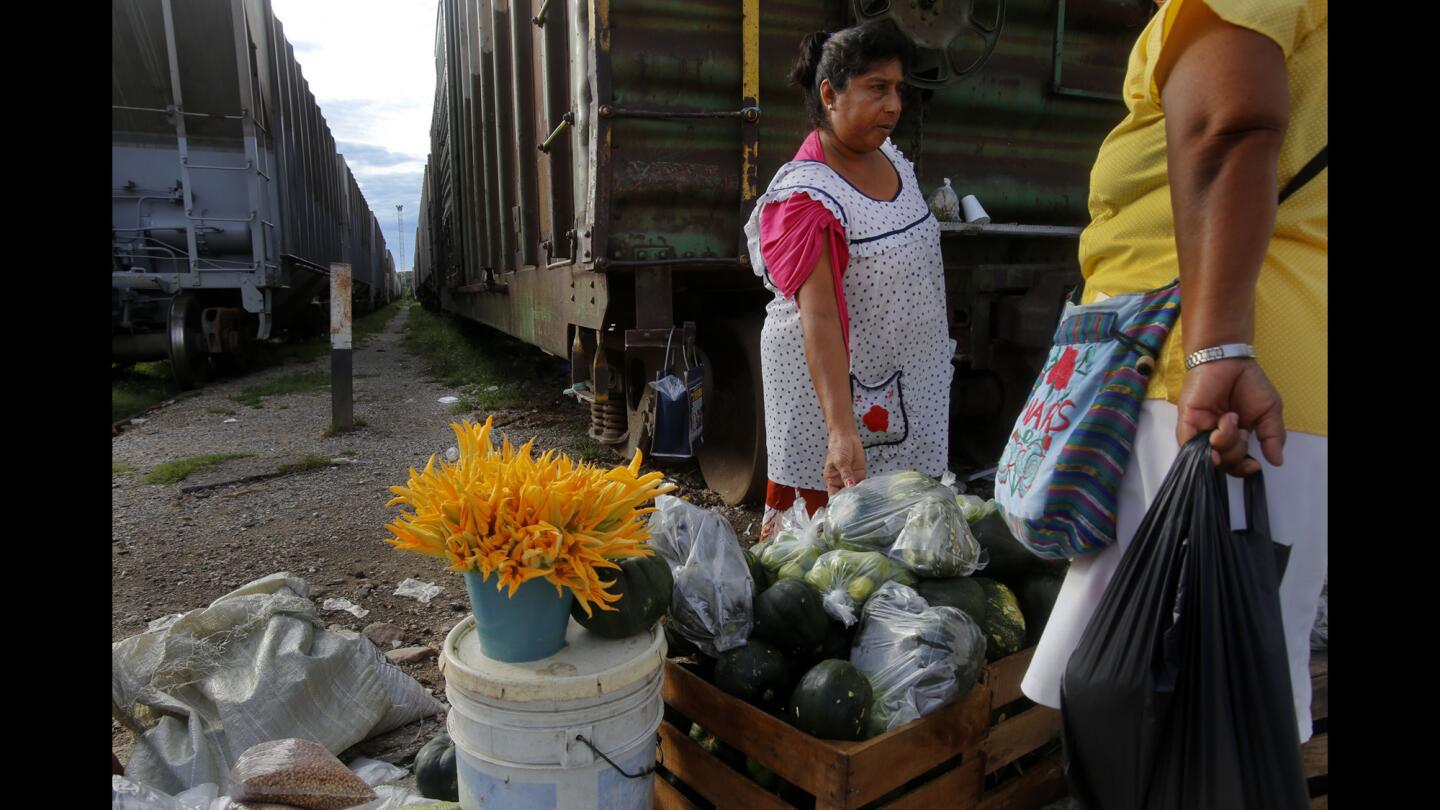
Vendors sell their wares in the train yard at Arriaga. Many businesses in the Mexican city, including hotels, catered to the hundreds of migrants who used to congregate there. (Michael Robinson Chavez / Los Angeles Times)
Advertisement
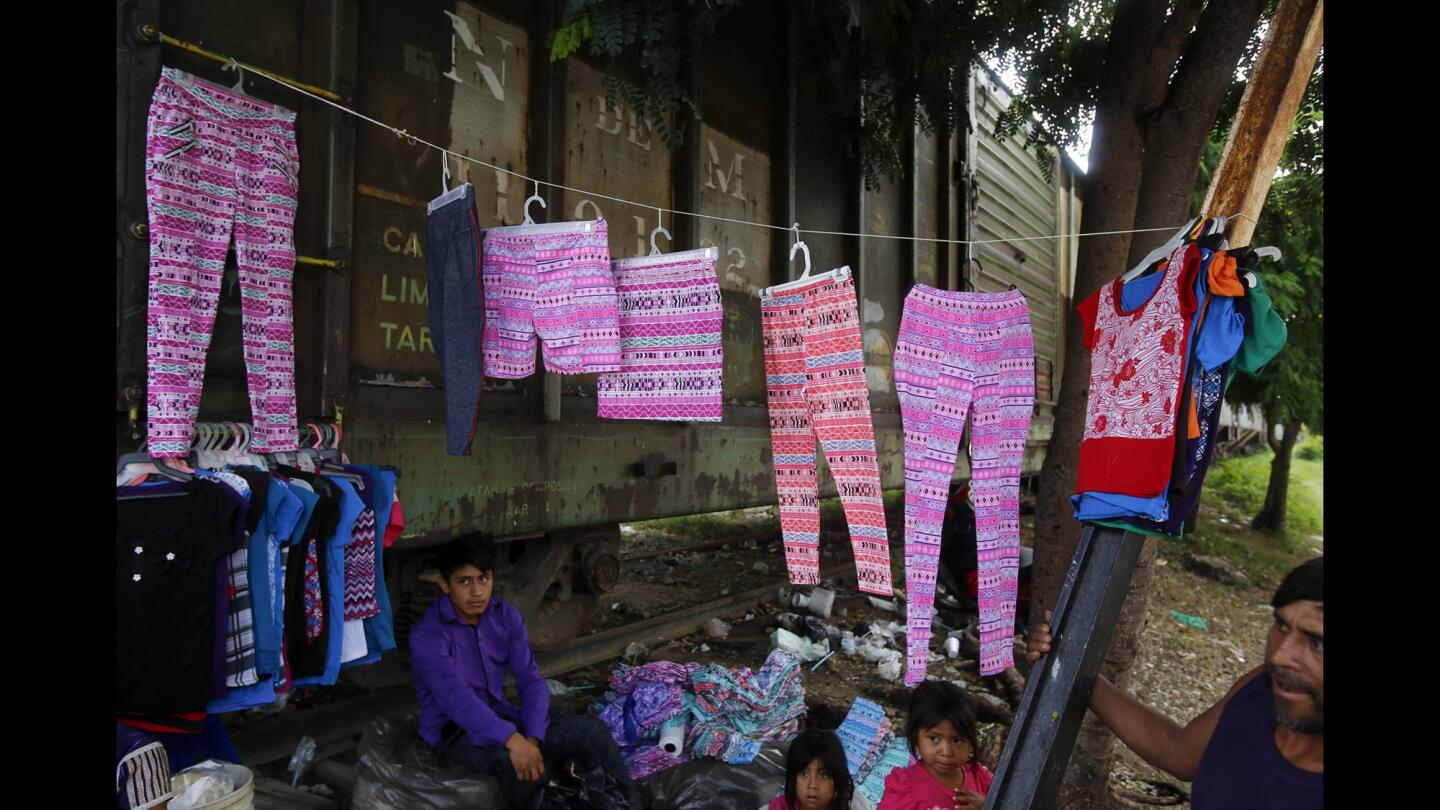
A clothing vendor in Arriaga. (Michael Robinson Chavez / Los Angeles Times)
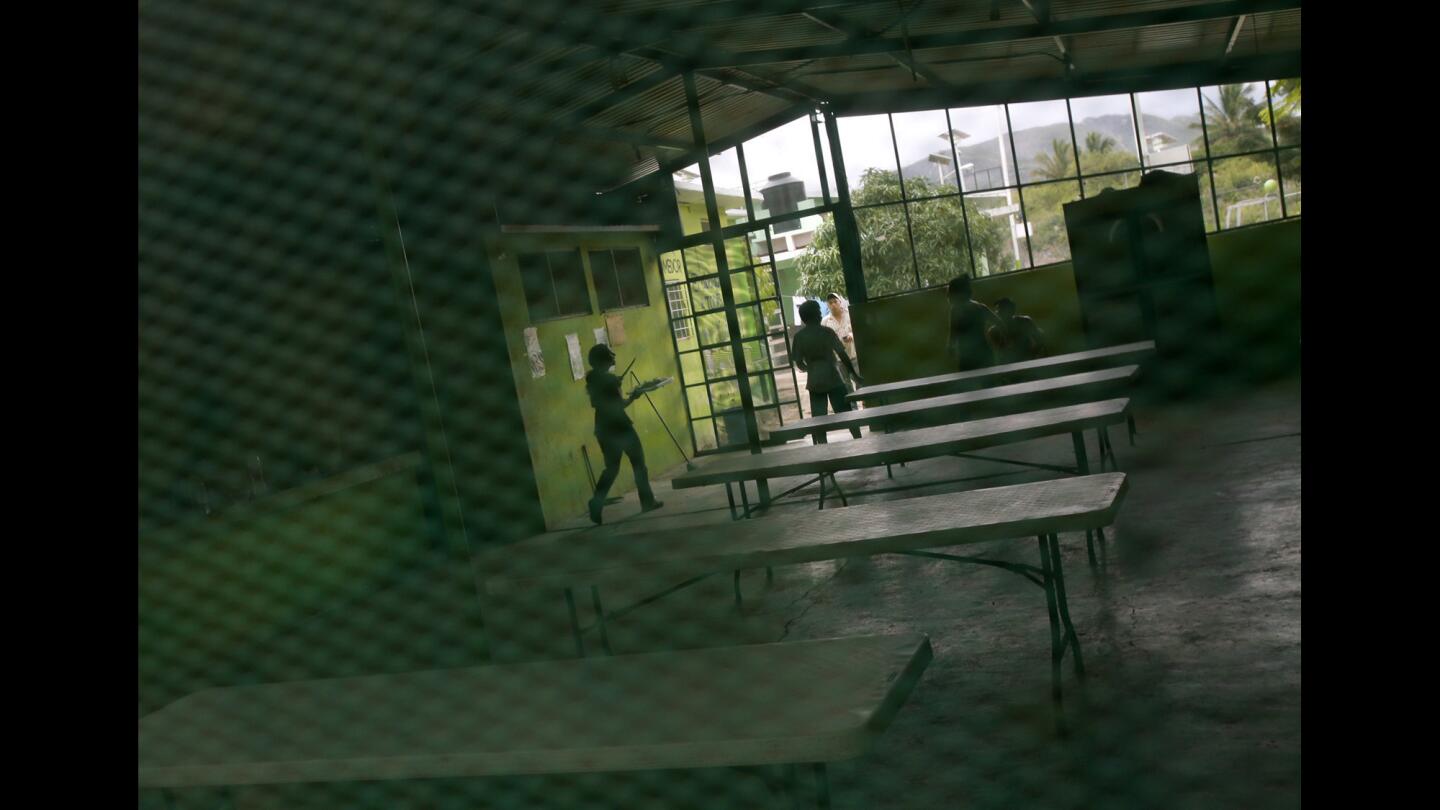
Migrants pass the time at the Hermanos en el Camino (Brothers on the Road) shelter in Ixtepec, in the southern Mexican state of Oaxaca. (Michael Robinson Chavez / Los Angeles Times)
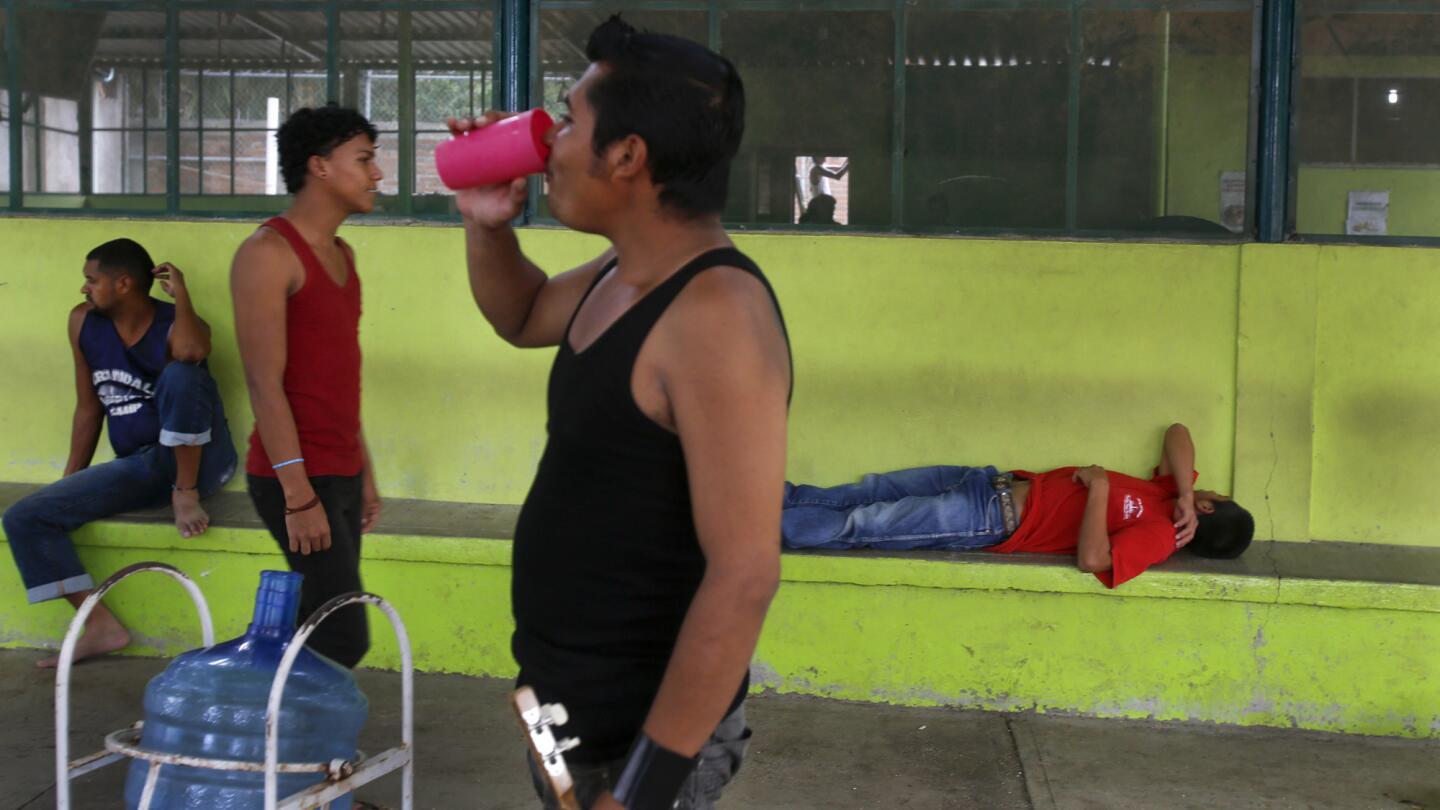
At the Hermanos en el Camino shelter. (Michael Robinson Chavez / Los Angeles Times)
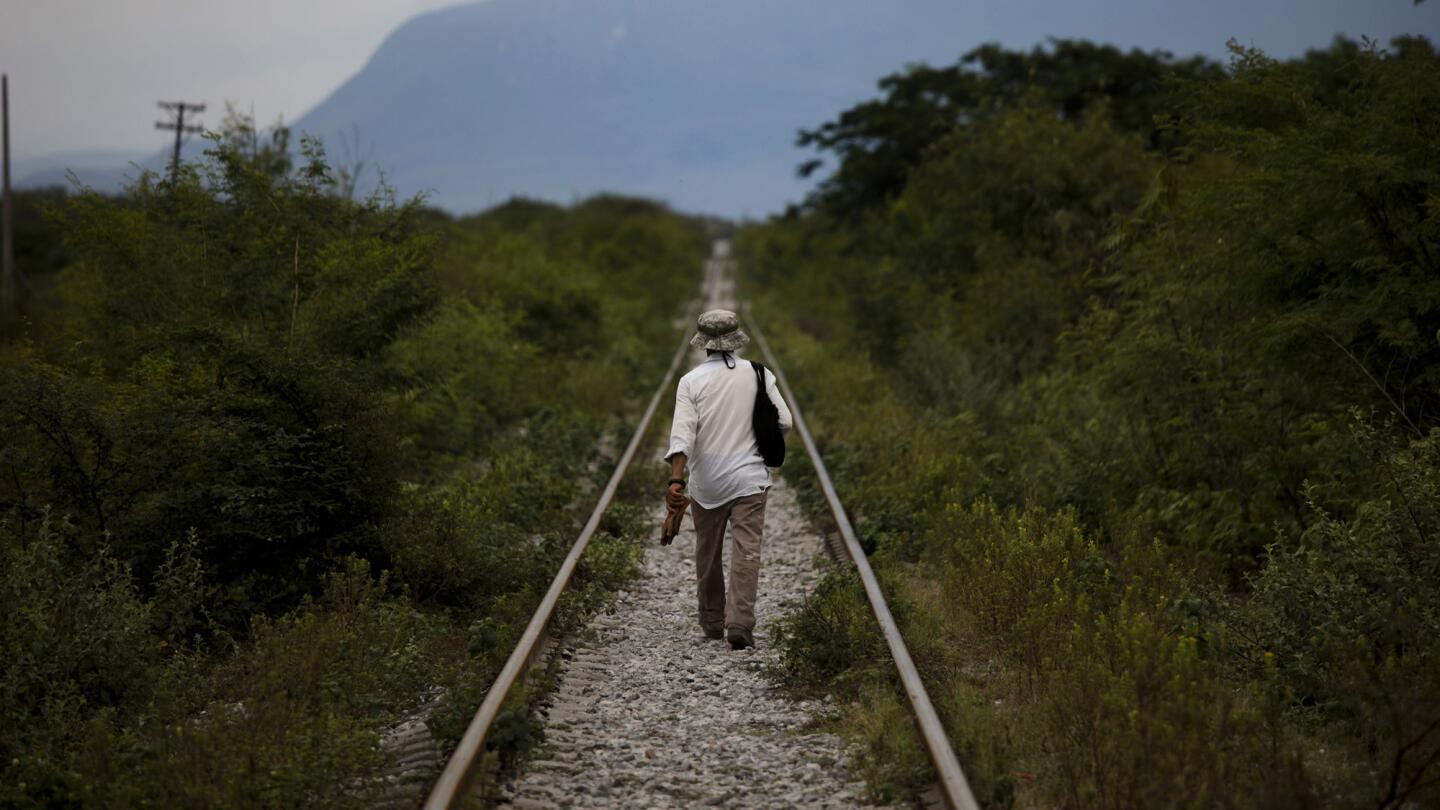
Mexico’s crackdown on migrants has led many to abandon riding the train and instead make the long walk toward the U.S. border. (Michael Robinson Chavez / Los Angeles Times)



